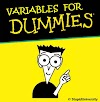When a random variable (r.v.) can take any value over a range (finite or infinite), then its distribution is modeled using its Probability Density Function (PDF). Or we can say, a PDF is a distribution of a random variable over a range(finite or infinite). An example of such a r.v. would be the height of students in a class; the height of a particular student could take any value between some reasonable interval.
Because the r.v. can take any value over a range, effectively an infinite number of possibilities, the probability that it will take a particular value is 0. Therefore, for a continuous r.v. we define the notion of infinitesimal[1] size intervals. Take the example of heights of students in a class. Lets say that the height of all the students is between 160 cm and 170 cm. It makes no sense to ask the probability that the height of the student is 165 cm; that probability is zero (for reasons explained above). We can, however, define the probability that the height of the student lies in the infinitesimal interval around 165 cm. The function that gives this probability density is referred to as the probability density function or PDF.
A cumulative probability function or CDF is defined over any interval where the PDF is defined. Suppose a PDF is defined over the interval [a,b] and let . Then the CDF over the interval [a,c] is obtained by accumulating (hence the term cumulative) the value of PDF for all values in the interval [a,c]. Typically, this is obtained by integrating the PDF from a to c.
Reference :
[1] Infinitesimal
Source : https://qr.ae/pNCBT5








0 Comments
BRING THIS DEAD POST TO LIFE